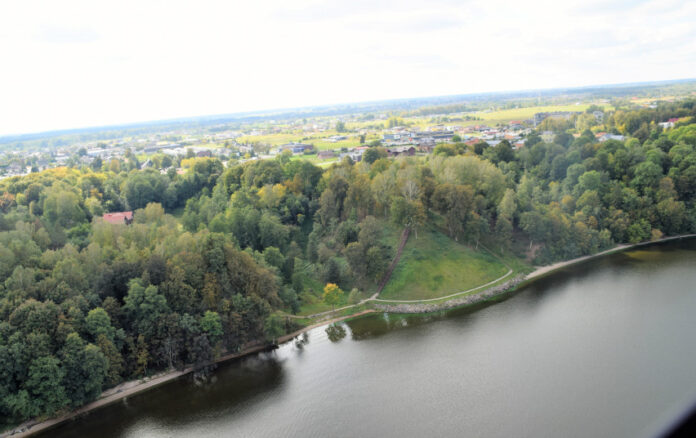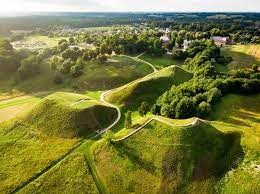
Hill forts are some of the most interesting and beautiful archaeological monuments in Lithuania. Their total number approaches one thousand, which is more than in neighbouring countries. In ancient times, hill forts were used as a refuge or defended settlement, located to exploit a rise in elevation for defensive advantage.

Lithuania has hill forts dating from the Bronze Age in the 1st millennium BC. Most of these forts were expanded between the fifth and fifteenth centuries when they were used in the Dukes’ Wars, and against the invasion of Teutonic Knights from the west. Most forts were located on the banks of a river or a confluence where two rivers met. These fortifications were typically wooden, although some had additional stone or brick walls. The hill was usually sculpted for defensive purposes, with the top flattened and the natural slopes made steeper for defence. A castle would be built on top. Nowadays, no castles are left standing, but the hill forts are popular sightseeing spots as they usually reveal stunning panoramas.
A famous hill fort was at Kernavė, the first capital of the Grand Duchy of Lithuania, 35 kilometres from Vilnius, still a symbol of statehood and pagan independence. It was first mentioned in 1279 in Herman Wartberge’s Livonian Chronicle.
Today it is a tourist attraction and an archeological site situated in the valley of the River Neris in eastern Lithuania. Findings there show evidence of the pre-Christian heritage of the region and subsequent sonversion to Christianity.The medieval feudal town was finallly destroyed by the Teutonic Order in the late 14th century. In later years, the remains were covered with a layer of sand and sediments which preserved most of the relics intact. Kernavė archaeological site is included in the UNESCO World Heritage List. Kernavė is a place where visitors can observe one of the most beautiful landscapes in Lithuania.
Recently, in the Kaunas region, at the village of Girioniai, a new hill fort has been discovered, according to the Kaunas Lagoon Regional Park authorities. It is overgrown with trees and underbrush, and has not yet been researched, but uprooted trees uncovered remains of ancient firesites and ceramic shards. It is thought to date back to the first or second millenium BC. It is described in the register of cultural heritage sites as a somewhat curved horn, surrounded by a fairly deep and wide moat. It borders the Pakalniškiai hill fort on its west side.
In Lithuanian such hills are called “piliakalniai” (from “pilies kalnas”), hills upon which castles were built in ancient times.





























